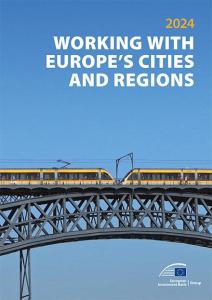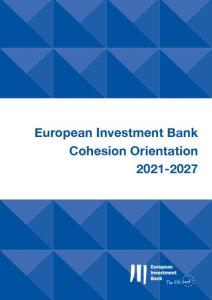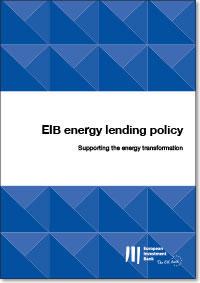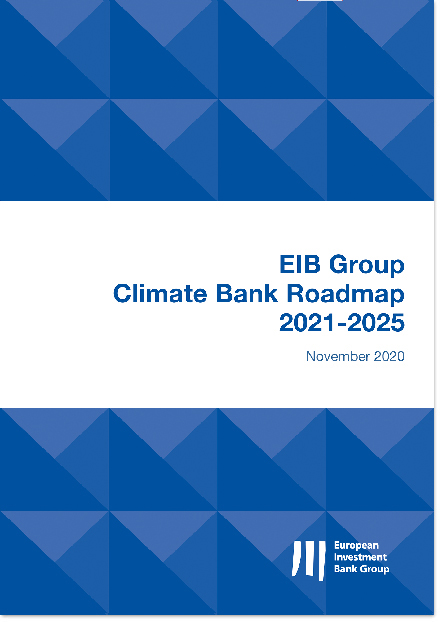What is cohesion?
The European Union's Cohesion Policy helps to ensure there are no gaps between countries and between different areas and regions in the same country. It supports key EU goals, such as the green and digital transition.
The EIB was born to support and finance cohesion throughout Europe. Since 1958, we have targeted support for projects in less-developed regions. Our cohesion financing supports projects in EU regions with gross domestic product (GDP) per capita below the EU average. Less developed and transition regions need specific types of support to reach their potential and to make sure that everyone in the European Union has a good quality of life.
EU regions who need it the most
The EU Cohesion Policy defines the following categories of regions:
Less developed regions, which have a GDP per inhabitant that is less than 75% of the EU average
Transition regions, which have a GDP per inhabitant that is between 75% and 100% of the EU average
More developed regions which have a GDP per inhabitant that is above 100% of the EU average

More support for cohesion regions
More than €36 billion, or 45% of our financing in the European Union, went to supporting cohesion regions in 2023, with close to 20% going to less developed regions. Economic modelling shows that our lending has a significant macroeconomic influence in these areas, increasing GDP by up to 2%. More support for high-impact projects is critical to reducing regional economic disparities and promoting a vibrant economy across the EU.

EIB Group activities in EU cohesion regions 2023
Our cohesion projects on the ground
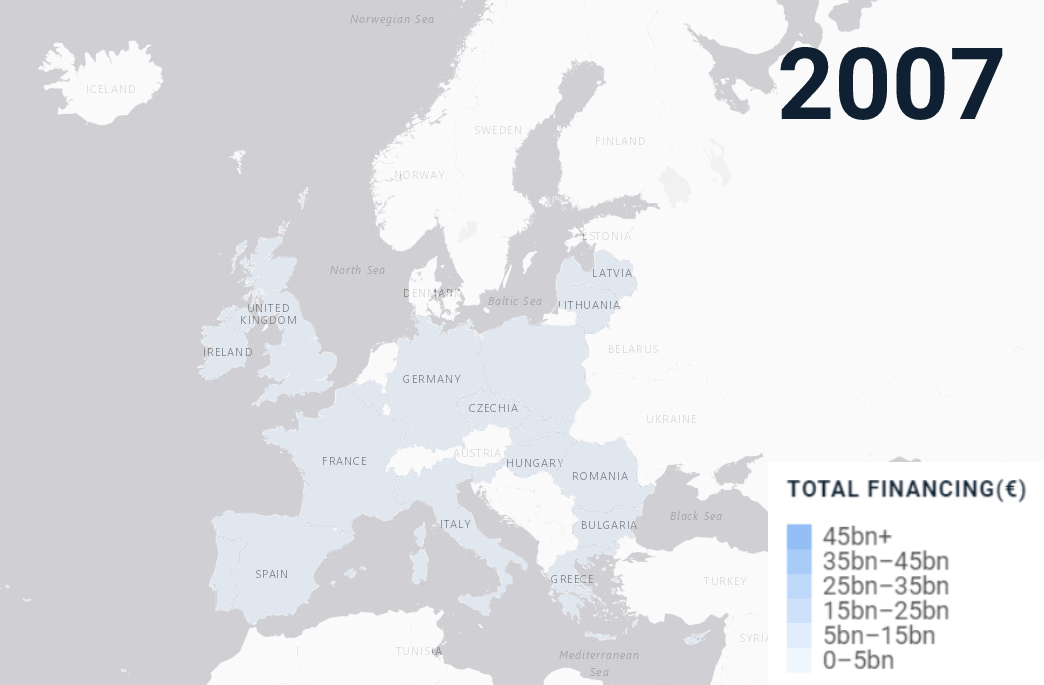
Find out about our EIB-financed cohesion projects in Europe
Our cohesion stories in the spotlight
Working with the European Union
We support the EU’s Territorial Agenda 2030
The EIB supports the Territorial Agenda 2030, a strategic policy document that outlines the goals for Europe, its regions, and its communities. This document defines two overarching objectives: a Just Europe and a Green Europe, with six priorities for developing the continent and all its places.
Balanced Europe
Better balanced territorial development utilising Europe's diversity.
Functional regions
Local and regional development, less inequality between places.
Integration beyond borders
Living and working across national borders.
Today, the EIB helps with important investments and gives technical advice. Many of these
activities help meet the goals and priorities of the Territorial Agenda 2030.
Healthy Environment
Better ecological livelihoods and climate neutral towns, cities and regions.
Circular Economy
Strong and sustainable local economies in a globalised world.
Sustainable Connections
Sustainable digital and physical connectivity of places.
Today, the EIB helps with important investments and gives technical advice. Many of these
activities help meet the goals and priorities of the Territorial Agenda 2030.
A Just Transition
The EU aims to become the first carbon-neutral economic union by 2050. While the advantages of decarbonisation are global, the costs are not. Regions dependent on mining and emission-intensive manufacturing will be hit hardest.
A Just Transition makes sure that the transition to a low-carbon economy is done in a way that doesn't have a negative impact on the people and places that are most affected.

How we support a Just Transition
Many of the worst affected EU regions already have low incomes or have a long history of industrial decline. It takes many changes to move away from coal mining and CO2-intensive energy and industrial production, for example:
- Find new sources of heat and electricity.
- Clean up mining sites.
- Attract new businesses and invest in infrastructure to make up for the loss of jobs, value added, and tax revenue.
The Just Transition Mechanism addresses the social and economic effects of the transition. It focusses on the regions, industries and workers who will face the greatest challenges. The mechanism supports projects located in or benefiting one of the Just Transition regions jointly identified by Member States and the European Commission in the Territorial Just Transition Plans.
The Just Transition Mechanism has three pillars:
Just Transition Fund
This fund provides grants of up to 85% of the project investment cost, with private or public sector beneficiaries covering the rest.
Our support: The EIB can co-finance the public sector beneficiaries’ contribution to projects, advise on project preparation or help with financial instruments.
Public Sector Loan Facility
An EIB loan can be combined with an EU grant for public sector entities to support individual projects or sets of smaller projects.
Our support: The EIB gives a loan to a counterpart (see our loans for the public sector) who also applies for the EU grant. Counterparts can also approach EIB financial intermediaries. Additionally, the EIB can provide advisory support to prepare and implement projects.
InvestEU "Just Transition" scheme
Some of the investments made in Just Transition regions may benefit from InvestEU.
Our support: For projects located in Just Transition regions, the EIB can give a loan backed up with the InvestEU guarantee and provide advisory support.
The Just Transition Mechanism will primarily assist areas in EIB Cohesion priority regions. This means that there will be strong synergies between Cohesion and Just Transition.
The EIB Group:
- Sets down “Ensuring a Just Transition for all” as one of the four overarching objectives in its Climate Bank Roadmap 2025.
- Supports all three pillars as outlined in the comprehensive approach to supporting the Just Transition Mechanism.
- Offers advisory support to authorities and promoters.
The EIB will co-operate with other Multilateral Development Banks (MDBs) to support Just Transition outside the EU, following the MDB Just Transition High-level principles.

Cohesive and creative
Our key publications
Projects eligible for financing
We finance regional and cohesion policy projects under the following policy objectives:
- Sustainable Cities and Regions (including Integrated territorial development and sustainable transport)
- Sustainable Energy and Natural Resources (including Renewable energy, Energy efficiency, water, sewerage and waste management and the bioeconomy)
- Innovation, Digital and Human Capital (including private and public R&D, digitalisation, telecommunication networks, life sciences, education and health infrastructure)
- Small and medium-sized businesses
What we offer
Our cohesion loans must address at least one of the EIB's four priorities: innovation, infrastructure, small businesses, and environmental sustainability. In cohesion regions, we fund both public and private sectors.
For municipalities and regional governments
Based on the size of the project, the EIB offers a wide range of financing instruments for municipalities and regional governments, ranging from investment loans for big projects to framework loans for smaller multi-sector initiatives.
Our structural programme loans can also help deliver the EU budget's shared management funds (formerly known as the European Structural and Investment Funds, or ESIF).
For small businesses, mid-caps and large corporates
Engineers and economists evaluate every project that the EIB finances, and the EIB makes this expertise available to promoters, regional and national governments, and financial intermediaries in cohesion regions to improve the technical and financial quality of their projects.
fi-compass
Innovation Fund - Project Development Assistance (PDA)
Joint Assistance to Support Projects in European Regions (JASPERS)
Project Advisory Support Service Agreement (PASSA)
EU countries can give part of their shared management funds to the InvestEU Fund by setting up a "Member State compartment." These countries can benefit from the EU guarantee's high credit rating, which allows more risky projects to be financed.


